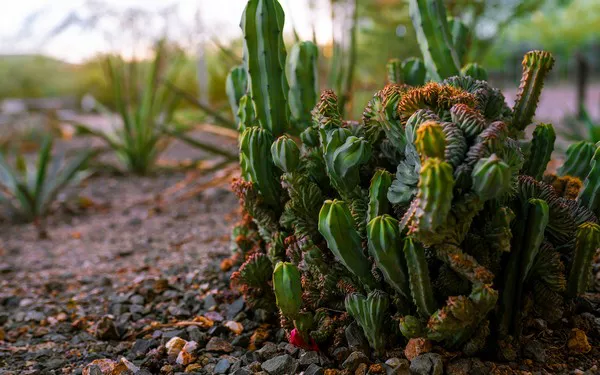Cacti, with their striking appearances and resilience, have fascinated botanists and gardeners alike for centuries. These remarkable plants produce some of the most captivating flowers in the plant kingdom, making them popular among collectors and enthusiasts. However, for those looking to cultivate these unique desert dwellers, understanding cactus flower pollination is essential. In this comprehensive guide, we will delve into the intricacies of pollinating cactus flowers, exploring the tools, techniques, and challenges associated with this fascinating process.
The Importance of Cactus Flower Pollination
Before we dive into the intricacies of pollinating cactus flowers, it is crucial to understand why this process is so significant. Cacti, like all flowering plants, rely on pollination for reproduction. Successful pollination leads to the development of seeds, which are vital for the plant’s survival and genetic diversity. In the wild, cacti rely on pollinators such as bees, butterflies, birds, and bats to facilitate this process. However, in cultivation, gardeners often need to take matters into their own hands.
Tools of the Trade
1. Understanding Cactus Flower Anatomy
To effectively pollinate cactus flowers, it is essential to familiarize yourself with their unique anatomy. Cactus flowers typically consist of several key components:
Pistil: The female reproductive organ, located in the center of the flower. It comprises the stigma, style, and ovary.
Stamen: The male reproductive organ, which surrounds the pistil. It consists of the anthers, where pollen is produced, and the filaments that support the anthers.
Petals: The colorful and often elaborate outer structures of the flower, designed to attract pollinators.
Understanding these parts will help you identify where to apply or collect pollen during the pollination process.
2. Tools for Cactus Flower Pollination
Gathering the right tools is crucial for successful cactus flower pollination. Here’s a list of essential items:
Small Paintbrushes: Fine-tipped paintbrushes are indispensable for transferring pollen from one flower to another.
Tweezers: Tweezers with a delicate touch can be used to gently manipulate cactus flower parts.
Magnifying Glass: A magnifying glass can help you see the tiny details of cactus flowers, aiding in precise pollination.
Labeling Materials: Keeping track of your pollination attempts is vital, so make sure to have labels and markers on hand to document your work.
The Pollination Process
Now that you have the right tools and a basic understanding of cactus flower anatomy, it’s time to explore the actual process of pollinating these unique plants.
1. Selecting Compatible Cactus Species
Before you begin pollinating, it’s crucial to select cactus species that are compatible for hybridization. Research the specific species you intend to cross, noting their blooming seasons and compatibility. Cross-pollination between species within the same genus is often more successful, but it’s not a strict rule.
2. Timing is Everything
Cacti often have short-lived flowers that open for only a day or two. Timing is crucial, so be vigilant and ready to pollinate when the flowers are receptive. Most cacti flowers are receptive in the morning, so early risers have an advantage.
3. Collecting and Applying Pollen
To collect pollen, gently tap the anthers of the male flower (donor) with a paintbrush, transferring the pollen onto the brush’s bristles. Then, using the same brush or a different one, apply the pollen to the stigma of the female flower (receptor). Ensure that you do not damage the delicate parts of the flower during this process.
4. Protecting the Flowers
After successful pollination, protect the pollinated flowers from rain, strong winds, or disturbances that could dislodge the pollen. Covering the flowers with fine mesh or paper bags is a common practice to prevent unwanted cross-pollination.
5. Record Keeping
Keep detailed records of your pollination attempts, noting the date, parent plants, and any specific techniques used. This documentation is invaluable for tracking your progress and making informed decisions for future pollination efforts.
Challenges and Tips
1. Overcoming Self-Sterility
Some cacti are self-sterile, meaning they cannot self-pollinate and require pollen from another individual. In such cases, it’s essential to have a compatible donor plant nearby or in bloom simultaneously.
2. Avoiding Contamination
Prevent contamination by thoroughly cleaning your tools between pollinations. Cross-contamination can lead to unexpected results and compromise the integrity of your experiments.
3. Patience is a Virtue
Cactus seeds can take weeks or even months to develop, so be patient. Create optimal conditions for germination, including well-draining soil and proper temperature and humidity levels.
Propagating Cacti from Seed
Once your cactus flowers have been successfully pollinated and have produced seeds, it’s time to think about propagating your cacti from these seeds.
1. Seed Harvesting
Wait until the seed pods have dried and started to split open before harvesting the seeds. Carefully collect the seeds and store them in a cool, dry place until you’re ready to plant them.
2. Sowing Cactus Seeds
Cactus seeds require specific conditions for germination. Use a well-draining cactus mix, sow the seeds on the surface, and mist them lightly. Cover the container with plastic wrap or a glass pane to create a mini greenhouse effect. Keep the soil consistently moist but not waterlogged.
3. Transplanting Seedlings
Once your cactus seedlings have developed several true leaves and are large enough to handle, you can transplant them into individual pots with well-draining soil. Gradually acclimate them to brighter light and less humidity.
Conclusion
Cactus flower pollination is a rewarding and intriguing aspect of cacti cultivation. With the right tools, knowledge, and patience, you can unlock the secrets of hybridization and propagate these remarkable desert plants from seed. By understanding the unique anatomy of cactus flowers, selecting compatible species, and mastering pollination techniques, you can embark on a journey to create new and exciting cactus varieties. Remember, successful pollination is an art, and like any art form, it requires practice and dedication. So, roll up your sleeves, grab your paintbrushes, and start pollinating your way to a garden filled with stunning cactus blooms and unique hybrids.


